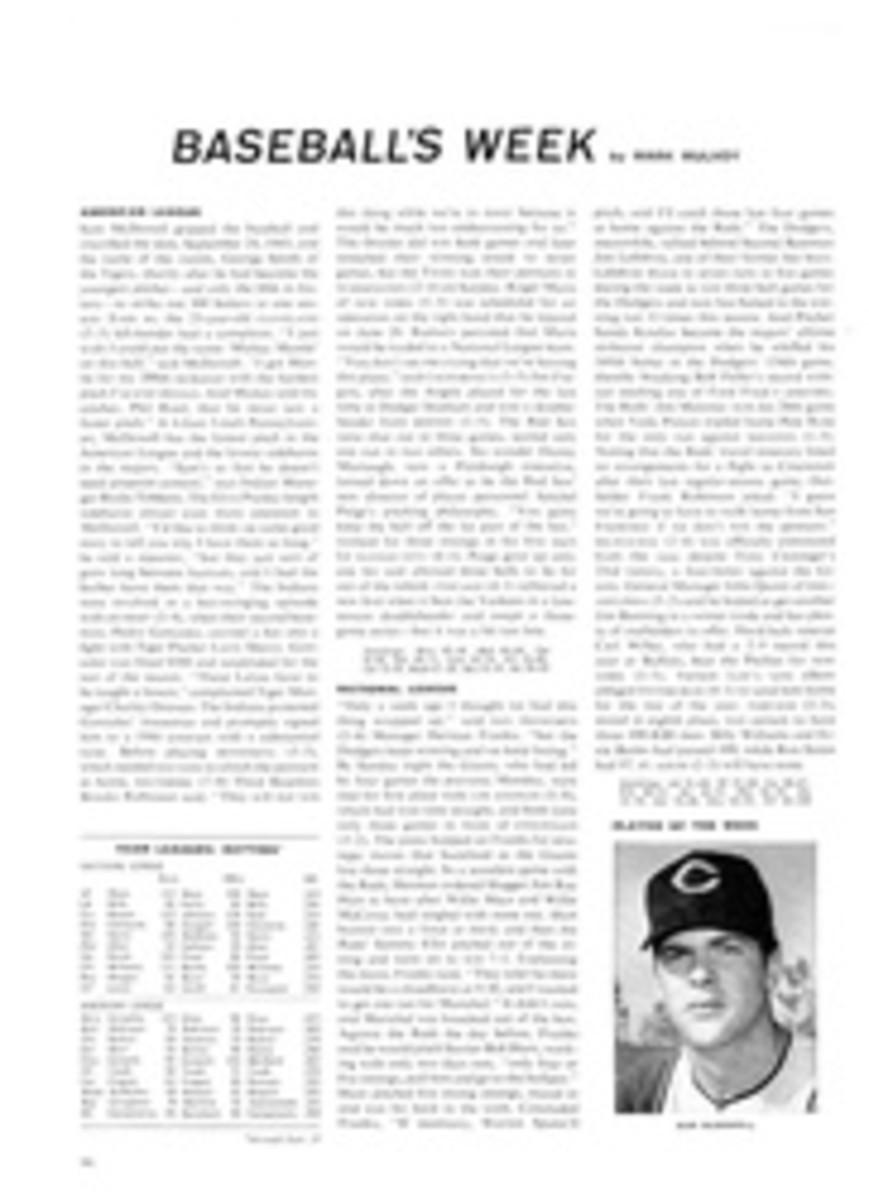
A SINKBOX SHOOT
Of all the forms of concealment devised by wildfowlers, none is quite so effective—or nearly so uncomfortable—as the sinkbox. The gunner lies on his back in the bottom of a pine box anchored bow and stern in an open bay and weighted until it is barely afloat. Hinged canvas wings break down the waves and keep the box from sinking to the bottom. Surrounded by oversize decoys, the whole rig is so perfectly camouflaged that decoying Canada geese will sometimes try to land right in the shooter's lap before they realize something is amiss. Sinkbox shooting is illegal in the U. S., but it is still practiced in New Brunswick, Canada. There, from October to December, gunners crammed into these floating torture chambers (or in sandbox blinds buried in the mud flats) experience some unusual waterfowling.
Before the days of realistic bag limits on waterfowl in the U.S., market hunters and sportsmen gunning from sinkboxes anchored in bays and sounds from Maine to the Carolinas took such a devastating toll of ducks and geese that their blinds became known as "engines of destruction." Using stools of up to 500 decoys, plus tethered live ducks and geese to call in the wild birds, and corn or grain bait scattered around the blind, a steady shot with plenty of black-powder shells could kill several hundred birds in a day.
By the time the U.S. Government got around to banning sinkboxes in 1936, such blinds were rare. Market hunting had already been outlawed 20 years before, and bag limits had been so drastically reduced that no one wanted to lug several 50-pound cast-iron decoys (used to keep the wings of a sinkbox awash) and a boatload of floating decoys out to a blind just to shoot a few birds. But some hunters, unable to forget the special thrill of close-range shooting they had experienced from a sinkbox, traveled to Tabusintac Bay in New Brunswick, where Jack Wishart, a former market hunter, operated a commercial shooting camp. Wishart built his first sinks in 1915, and the same boxes, painted a dull blue-gray and carefully caulked with cotton every fall, are still in use—often by Americans—today.
The boxes are anchored in the bay several weeks before the goose season opens on October 1, so that the migrating Canadas will get used to them. "Geese and ducks have no fear of a sinkbox," says Myles Wishart, who has taken over the camp from his father. "Even when we pull out the decoys at one o'clock [shooting on Tabusintac Bay is permitted only from dawn until 1 p.m., in order to give the birds ample opportunity to rest and feed in the bay and to keep them around] the birds often bunch up around the sinkboxes. Yet, oddly, they won't land within 100 yards of a dory that has been anchored in the bay and untended for a week."
In order to be in his blind when the Canadas begin flying at dawn, the gunner who stays at Wishart's comfortable 200-year-old house overlooking the bay must finish breakfast by 5 a.m., which leaves him 30 minutes to struggle into insulated underwear, wool pants and shirt, sweater, heavy shooting coat, foul-weather suit and hip boots. Having stuffed his pockets with shells, sandwiches and hand warmers, and loading himself down with a shotgun, a thermos of strong black tea or boullion and, if he has ever been in a sinkbox before, a cushion and a coffee can for periodically bailing out his blind, he waddles out into the chilly predawn darkness and down to the dock. There a 28-foot skiff, powered with a coughing one-cylinder engine, will take him across the bay to his floating coffin.
A French-Canadian guide bails out the blind, lines it with hay smelling faintly of horses and cattle and sets out 100 or more decoys. When the gunner is uncomfortably ensconced—there is no other way—the guide moves off, anchoring his skiff several hundred yards downwind, where he will call in the geese. Already shivering with cold and soaked with salt spray that stiffens his rubber suit and boots until they crackle, the gunner stares out over the stern of the blind at the bobbing decoys and watches the horizon for geese.
Crouched in the bottom of his skiff, the guide begins to call to a flock of Canadas half a mile away. A small family of geese breaks away from the flock and swings in over the blind, long necks craned and heads tipped down to look over the decoys. Inching farther down in the cramped box, the gunner waits until the geese make a wide circle, turn back up into the wind again and glide slowly down toward the decoys, webbed feet outstretched and wings set. When they loom like great, ponderous balloons off the stern, the gunner sits up to shoot.
On days when the bay is too choppy for the sinkbox, or when the geese are resting and feeding in a particular cove, Wishart puts his shooters in sandbox blinds. Dug in near the water's edge, camouflaged with mud and kelp and surrounded with decoys, the sandbox is just as effective as the sinkbox and requires a lot less bailing. On bluebird days, when the geese are not flying, there is excellent puddle-duck shooting on the ponds and the rivers. Wishart leases 1,000 acres of upland woodcock and partridge cover where the shooting is often spectacular. Last October two gunners with a German shorthair put up 60 woodcock in an afternoon. There are Atlantic salmon in the Tabusintac River, and they will take tiny dry flies in October. But it is goose shooting from sinkboxes that brings hunters to Tabusintac Bay. The limit is five geese a day and six ducks, a far more liberal bag limit than can be taken on U.S. waters.
The man who wedges himself into a sinkbox has to endure a considerable measure of misery. But there are rewards—the howling of the wind overhead, the smell of mud flats at low tide, the antics of mergansers fishing around the blind and the thrilling sight of honking Canadas settling slowly and majestically into the decoys.
ILLUSTRATION
ROBERT CUNNINGHAM
In the day's first light guides bury a sandbox—a land-bound sinkbox—on the lip of a tidal cove.
ILLUSTRATION
ROBERT CUNNINGHAM
From the bottom of a sinkbox awash and nearly out of sight among outsize decoys, a gunner pops up suddenly to shoot at a flock of Canada geese landing nearby in the choppy bay.
ILLUSTRATION
ROBERT CUNNINGHAM
Geese in hand, the gunners abandon their coffin-like quarters for a warm fire and medicinal spirits.
TWO ILLUSTRATIONS
ROBERT CUNNINGHAM

